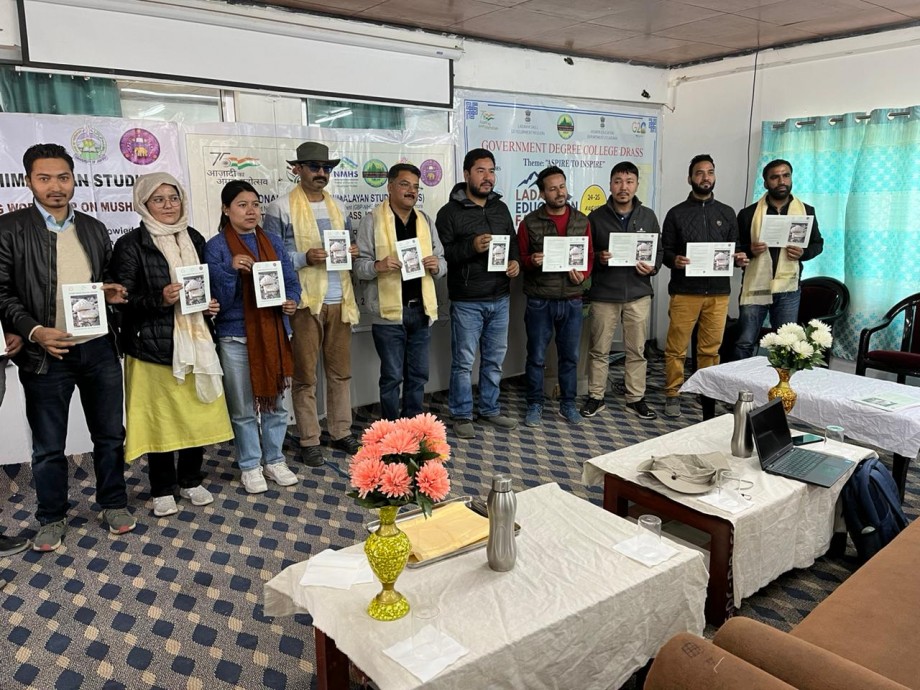Booklet on culturing techniques of newly discovered mushroom ‘Kargil Dingrii’ launched

Department of Botany, University of Jammu launched a booklet on the culturing techniques of newly discovered mushroom, Kargil Dingrii, at Government Degree College Drass on October 9.
Professor Yash Pal Sharma, Dept. of Botany, University of Jammu organised an awareness campaign on "Mushrooms for Nutrition, Health and Well-being" at GDC Drass under the project National Mission on Himalayan Studies (NMHS). A booklet dealing with the culturing techniques, crop management, and conservation of Kargil Dingrii, a newly discovered mushroom from the Drass was also released at the event.
National Mission on Himalayan Studies is a Central Sector Grant-in-aid scheme, targets to provide much-needed focus, through a holistic understanding of the system's components and their linkages, in addressing the key issues relating to the conservation and sustainable management of natural resources in the Indian Himalayan Region (IHR). As the Mission specifically targets the Indian Himalayan Region (IHR), the jurisdiction of NMHS includes 11 Himalayan states (i.e., Arunachal Pradesh, Himachal Pradesh, Jammu & Kashmir, UT Ladakh, Manipur, Meghalaya, Mizoram, Nagaland, Sikkim, Tripura and Uttarakhand) and two states partially (i.e., hill districts of Assam and West Bengal).
Principal, GDC Drass, Dr Amjad Ali Abbasi provided a brief introduction of the guest speakers and also briefed the college students about the purpose of the event.
The guest speaker, Professor Yash Pal Sharma, started with a brief introduction of the NMHS Project, and how he and his team worked with the project to explore the mushrooms of the Drass and Kargil region. It was after the immense labour work put into play that several new species of mushrooms were discovered from the mentioned regions, the speaker said.
One among the newly discovered mushrooms was Shentelii, a purely endemic species to the Drass region. It has been named as the mushroom of Tiger Hill, Drass Dingrii, and Kargil Dingrii based on the locality where it was discovered.
Furthermore, the speaker demonstrated how the Shentelii was identified using Mycobank, Genebanks, and how it can be cultured in the laboratory. He also discussed at length how this mushroom can be grown in the field using the agri-wastes and litter from which a Shentelii cultivating unit can easily be set up.
The other newly found edible and non-edible mushrooms by Professor Sharma such as Lactarius Drassinus, Amanita hemiphaba, Auricularia auricula, Ophiocardinus sinensis, Termite mushrooms, Kandi mushrooms, etc. from UT Ladakh and Baderwah, Jammu were also showcased to the audience, comprising of both students and faculty of the college.
Prof. Harish Chander Dutt spoke about the expedition to UT Ladakh to explore its biodiversity. He also brought into the limelight the importance of ethnobotany and preservation of the traditional knowledge.





